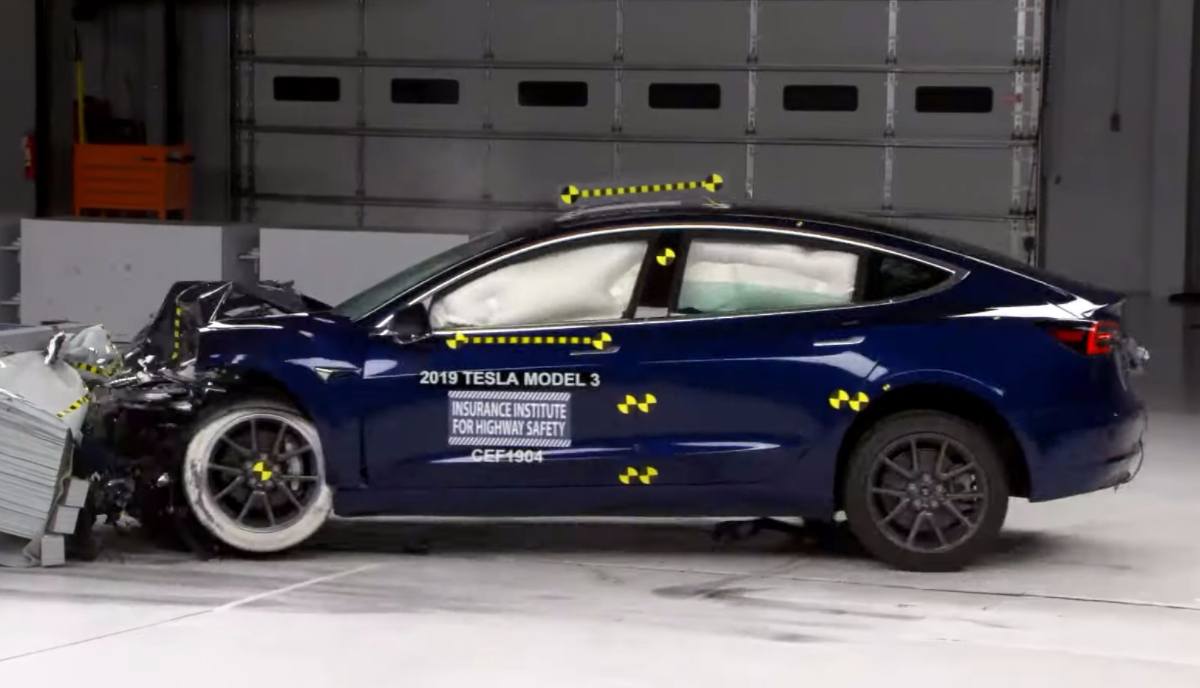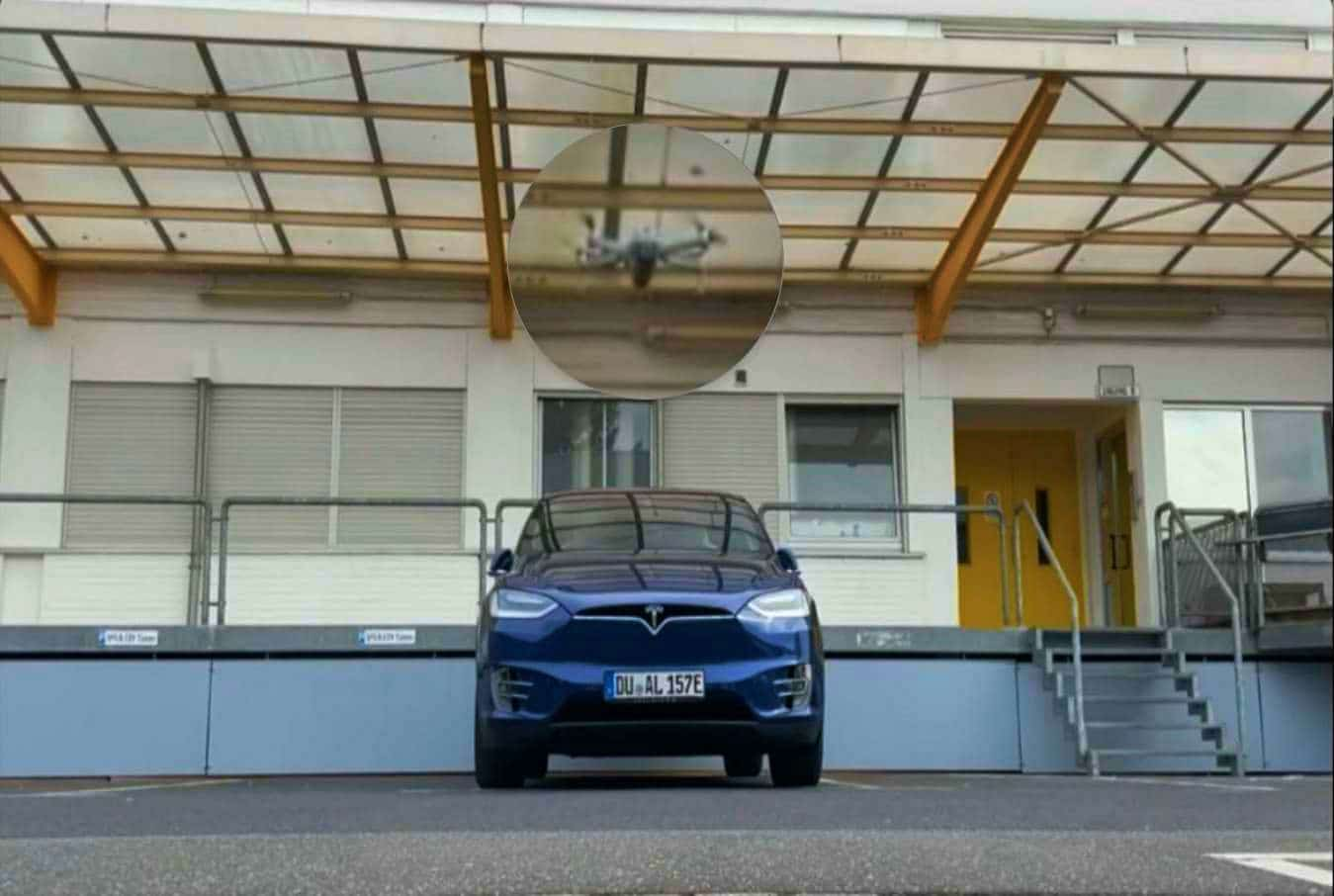IIHS (Insurance Institute for Highway Safety) awarded the post-June 2018-built Tesla Model 3 with its highest safety rating “Good” and Top Safety Pick +. The Insurance Institute was also tested pre-July 2018 and gave it almost a perfect safety rating as well except in the “headlight” department and in reducing the risk of “lower leg foot safety.”
The company has previously tested the 2019 Audi e-tron, the first-ever electric SUV from the German automaker, along with 2019 Chevrolet Bolt. The institute awarded “Good” along with Top Safety Pick + ratings to the Audi SUV but a lower “Marginal” rating to Chevrolet’s hatchback.
Similar safety tests were also conducted on a Hyundai Nexo electric car along with a hydrogen fuel cell vehicle. Both of whom earned the highest safety ratings. The scores achieved by these electric cars are greater than ICE-powered vehicles, suggesting EVs as a safer means of a personal vehicle.
But Chief Research Officer for the IIHS David Zuby said, “I wouldn’t say that electric vehicles are inherently safer.” There’s some ground to his statement, but the reason for his reluctance to accept electric cars as the safest means of transport is bound to change.
Tesla Model 3 IIHS Perfect Scores
The Tesla Model 3 is built keeping the safety of passengers in mind. It is one of the best selling electric cars across the world and continues to impress people as time passes. Only recently it was revealed that battery degradation also occurs super slow in a Tesla electric car. This will also improve its resale value in the future.
During the IIHS testing, the Tesla Model 3 scored perfect scores in all departments. Pre-July 2018 built Tesla Model 3, however, lacked in minimizing the glare from its headlights. The glare wasn’t uncontrollable as it still received the second-best “Acceptable” rating in the test.
Another department in which Tesla Model 3 received an “Acceptable” rating was in “lowering the risk of injury” to lower leg foot. According to IIHS, it is one of the most challenging things to get right in a car.
The small motor in an electric vehicle as compared to an ICE car and a battery pack which can be placed under the floor, in the hood or even at the back gives electric cars a much higher degree of flexibility in maintaining safety, according to Zuby.
However, he echoes a similar statement from NHTSA, with a little more leniency. He believes that the above “flexibility” makes EVs safer or at least as safe as, if nor safer than traditional vehicles.
NHTSA, during a tussle with Tesla, which involved a cease and desist from the former, also claimed that no particular car (electric or otherwise) is safer than any other one with a perfect score rating. The statement was part of an order that NHTSA wanted Tesla and Elon Musk to stop misleading people by claiming that the Tesla Model 3 has the “lowest probability of injury” than any other vehicle.
On the other hand, Tesla’s defense, after going an extra mile for an additional crash test for Model 3, was that its car received the highest NHTSA safety ratings, so it is the safest.
The NHTSA tried to explain their position by saying that the ratings are relative and that the passengers of Tesla Model 3 would be at a higher risk of injury in a crash involving a 5,000 heavy vehicle like a pickup truck. The Model 3 weighs around 3,700 pounds.
Talking about the safety of electric cars, the Audi e-tron received perfect crash test scores in all departments. The IIHS awarded a “Good” safety rating to Audi’s electric SUV with all the criteria.
The high safety rating of Audi e-tron were explained in an article from Jalopnik titled “Why No One Is Beating Tesla’s Range.” Audi themselves explained that the e-tron is “built to handle some serious abuse.” This statement was a partial answer to the question the title of the article is asking. According to Audi, the range had to be compromised to ensure long term durability of the e-tron, both in terms of battery performance and physical integrity of the car.
Another quite popular electric car, the Chevrolet Bolt EV, was also tested by the IIHS and received the third-highest “Marginal” safety score. The structural safety of the electric car’s cage, along with its ability to keep passengers restrained during a collision, received the second-best “Acceptable” rating.
Meanwhile, the driver of the Chevrolet Bolt is at a higher risk of torso injury relative to Audi and Tesla. The headlights on the Bolt received a “Poor” rating and offered no high beam assistance. The overall score of the 2019 Chevrolet Bolt given by IIHS came out to be “Marginal.”
Commenting on Bolt’s safety rating by IIHS, General Motors spokesperson Chad Lyons said, “The headlight meets or exceeds all lightning-related federal motor vehicle safety standards.” Chevrolet is also planning a 2020 version of Bolt, which will have a higher range than the base Tesla Model 3.
My Take
The issues raised by the officials IIHS and NHTSA have no intention of harming the reputation of any electric car; instead, they only seek to inform the customers about exactly what they’re buying.
It’s common physics that being inside the heavier object is safer during a collision with a lighter one. However, when electric pickup trucks start to arrive on the scene, we can expect them to be the safest vehicles out there bar none.
Electric cars are currently the safest and electric pickup trucks will be relatively safer. Also when electric-semis will come around, then they’ll be the safest. You can see the pattern here, right?
The ratings of the EVs are relative and that’s the whole point.










